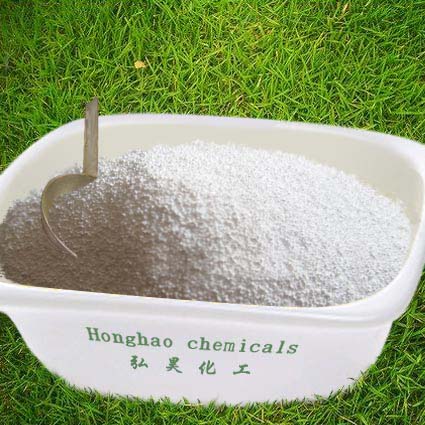| Kappa Refined Carrageenan |
| Appearance |
|
Snowy White Powder |
| Particle Size |
95% min. Thru 120 mesh |
| Viscosity (mPa.s) |
≥5 |
| Total Ash Content (%) |
≤30 |
| Moisture (%) |
≤10 |
| Gel Strength (g/cm2) (1.5%w/w,0.2% KCL,20℃) |
≥1100 |
| Transparency (T%) |
≥70 |
| PH |
7.0~9.0 |
| Ash of not dissolve into acid (%) |
≤1.0 |
| Sulphate (%,count by SO42-) |
15~40 |
| Heavy metal |
|
| Arsenic content (ppm) |
≤3.0 |
| Lead content(ppm) |
≤5.0 |
| Mercury content(ppm) |
≤1.0 |
| Cadmium content(ppm) |
≤2.0 |
| Microbiology |
|
| Total Plate Count (cfu/g) |
≤5000 |
| Yeast & Moulds(cfu/g) |
≤300 |
| E. coli |
Negative in 5g |
| Salmonella |
Negative in 10g |
TOP
| Kappa Semi-Refined Carrageenan |
| Appearance |
|
tiny yellow powder |
| Particle Size |
120/200mesh |
| Viscosity (mPa.s) |
20~200 |
| Total Ash Content (%) |
≤30 |
| Moisture (%) |
≤13 |
| KCL Gel Strength (g/cm2) (1.5%,0.2% KCL) |
≥450 |
| Transparency (T%) |
≥70 |
| PH |
7.0~11.0 |
| Ash of not dissolve into acid (%) |
≤1.0 |
| Sulphate (%,count by SO42-) |
15~40 |
| Heavy metal |
|
| Arsenic content (ppm) |
≤2.0 |
| Lead content(ppm) |
≤5.0 |
| Mercury content(ppm) |
≤1.0 |
| Cadmium content(ppm) |
≤1.0 |
| Microbiology |
|
| Total Plate Count (cfu/g) |
≤5000 |
| Yeast & Moulds(cfu/g) |
≤300 |
| E. coli |
Negative in 5g |
| Salmonella |
Negative in 10g |
TOP
| Iota Semi Refined Carrageenan |
| Appearance |
|
Snowy White Powder |
| Particle Size |
120mesh |
| Viscosity (mPa.s) |
≥5 |
| Total Ash Content (%) |
≤30 |
| Moisture (%) |
≤10 |
| KCL Gel Strength (g/cm2) (1.5%,0.2% KCL) |
Absent |
| Transparency (T%) |
≥70 |
| PH |
8.0~10.0 |
| Ash of not dissolve into acid (%) |
≤1.0 |
| Sulphate (%,count by SO42-) |
15~40 |
| Heavy metal |
|
| Arsenic content (ppm) |
≤2.0 |
| Lead content(ppm) |
≤5.0 |
| Mercury content(ppm) |
≤1.0 |
| Cadmium content(ppm) |
≤1.0 |
| Microbiology |
|
| Total Plate Count (cfu/g) |
≤5000 |
| Yeast & Moulds(cfu/g) |
≤300 |
| E. coli |
Negative in 5g |
| Salmonella |
Negative in 25g |
TOP
About Carrageenan:
Made from algae or seaweed Carrageenan is a kind of food additive ,and used as a thickener in place of other thickener. Carrageenan is usually derived from either red alga, sometimes called Irish moss, Carrageenan is a common ingredient in many foods, such as milk products like yogurt or chocolate milk. Extracted from red seaweeds, Carrageenan are a family of linear sulfated polysaccharides. Carrageenan is used in baking cooking. Carrageenan are large,highly flexible molecules.
Carrageenan has two kinds, one is refined carrageenan, the other is semi refined carrageenan.Carrageenan belong to food additives.
Carrageenan is widely used in the food and other industries as thickener and stabilizing agents.This means that they are easy to pump but stiffen again afterwards. When Carrageenan is used in food products, carrageenan has the E-number E407 or E407a. When iota carrageenan is combined with sodium stearoyl lactylate,a synergistic effect is created.The essential difference in the refining process is that the carrageenan is dissolved and filtered to remove cell wall debris.
Applications: carrageenan in food, medicine, daily chemical, biochemical, architectural coatings, textile and food aspects of the use is widespread. In the food industry as a gelling agent, thickener, stabilizer, suspending agent and clarifying agent, used in soft candy, jelly, ham, canned meat, ice cream, beverages, condiments, milk, bionic food, jam, beer , bread and pet food. In the pharmaceutical industry can be used as drug suspension, dispersing agents, can also be used to make capsules and other products.
1. In daily chemical industry can be used in toothpaste, detergents, cosmetics and air fresheners and other products. In biochemistry can be used as carriers and immobilized microbial cell carrier.
2. In other areas, industrial water-based paint can be used as paint thickeners, ceramic glaze thickener, thickening of the watercolor, graphite SC, textile and knitted pulp, agricultural agents and kill weeding insect agent suspension.
TOP














